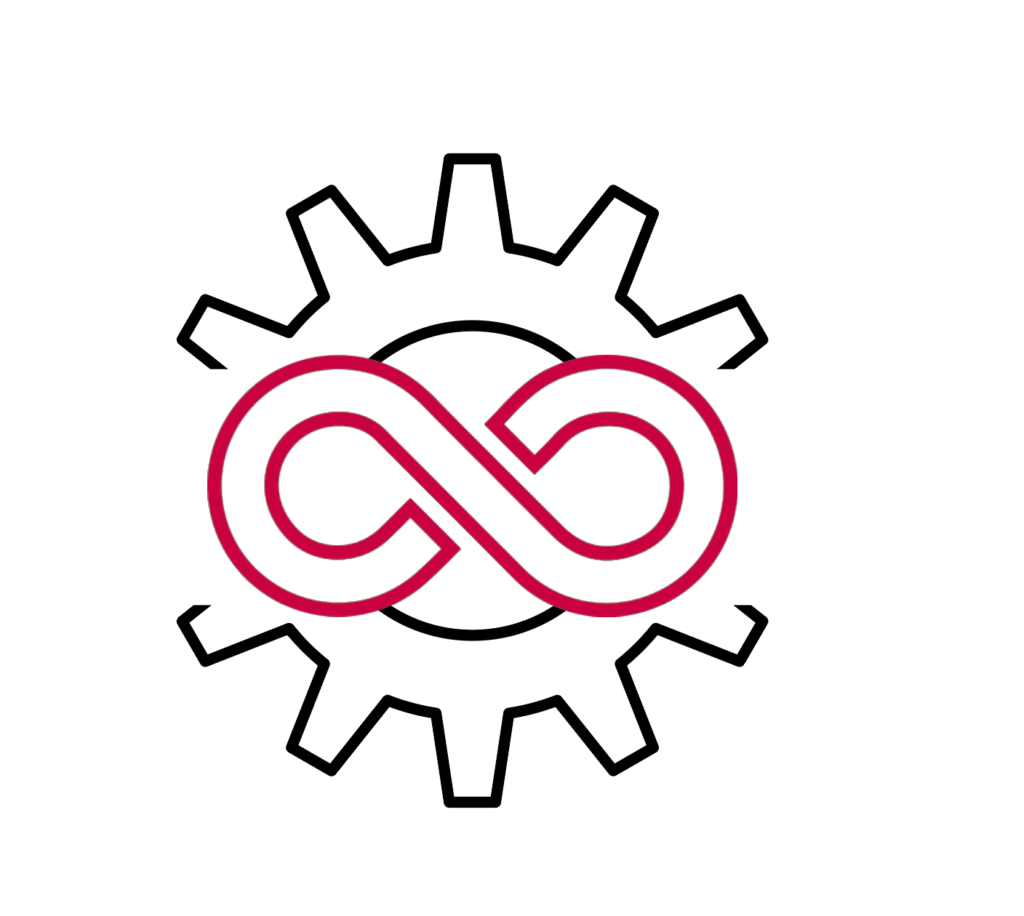DevOps vs Agile: Is There a Difference?
The terms “Agile” and “DevOps” have become so commonplace in software development, they’ve lost the impact they had at first. While most practitioners have at least a surface understanding of DevOps vs. Agile, the nuances can be lost with familiarity. And, in some cases, the terms are used interchangeably, which is wrong.
So, let’s start at the beginning and discuss DevOps vs. Agile: Is There a Difference? Why does understanding the difference matter? And how will this impact your work?
What is Agile?
Agile development refers to any development process that is aligned with the concepts of the Agile Manifesto. The Manifesto outlines the principles behind software development methodologies that support the changing requirements and solutions developers face in the real world as opposed to the waterfall planning and output processes followed traditionally. It is based on iterative development and collaboration between self-organizing cross-functional teams.
Agile methods or Agile processes generally promote:
- A disciplined product management process that encourages frequent inspection and adaptation
- A leadership philosophy that encourages teamwork, self-organization, and accountability
- A set of engineering best practices intended to allow for rapid delivery of high-quality software, and
- A business approach that aligns development with customer needs and company goals.
Learn more about what Agile is.
What is DevOps?
DevOps is a mix of cultural, process, and tool changes designed to bring teams closer together so that they can build and operate software in as streamlined and automated a fashion as possible. It is the ultimate blending of Development and Operations teams.
DevOps can include many different subject matters, but in addition to its overall cultural focus, it involves six main topic areas:
- Continuous Integration (CI) – the habit of regularly merging your code and validating the results through unit tests.
- Continuous Delivery (CD) – automating the building and testing of code so that teams can deliver functioning software to needed environments at any time.
- Infrastructure as a Service – allowing version-controlled code to create and destroy environments on the fly, streamlining the development process.
- Automated Testing – automating manual testing efforts that are repetitive and time-consuming, surfacing issues right when code is initially being built.
- Security Testing (DevSecOps) – the infusion of a security mindset into the execution of a nimble and automated DevOps practice.
- Monitoring – automating the deployment and configuration of monitoring tools, and development practices that ensure software relays the most critical information to validate proper operations.
Learn more about what DevOps is.
How do Agile and DevOps work together?
While Agile and DevOps started independent of each other, they share traits focused on improving the efficiency and speed of development and operations teams. As organizations become more Agile and refine their product management abilities, they depend on technical teams to keep pace and maintain flexibility.
This is where DevOps comes in. The DevOps approach helps teams utilize tools, automation, and cultural strategies to change how they work as a team, and how they work with others. The relationship becomes symbiotic: product teams work hand-in-hand with developers, testers, and other Operations teams to ensure everyone has more contextual awareness. This promotes greater overall quality in a shorter period.
Agile involves the development of software while DevOps focuses on bringing code into production. Agile lays the foundation for DevOps and enables teams to develop higher-quality software faster. Dave West from Scrum.org notes: “They work together to achieve a common goal — developing software that works perfectly. Agile emphasizes team interactions, culture, and values. DevOps emphasizes delivery pipelines and flow. Both include faster delivery cycles, smaller increments or releases, and use feedback to improve and remove waste and impediments. Both approaches can also influence a cultural shift in an organization that promotes small changes that are easily manageable so they lead to bigger and better business outcomes over time.”
Consider five ways Agile and DevOps interrelate, as noted by CodeWithBeri:
- Continuous integration and deployment (CI/CD). Applying CI/CD principles to agile development ensures that changes are always rigorously tested before deployment. This helps developers catch bugs early, leading to fewer issues down the line.
- Automated testing. Tests should be automated so they can run continuously without compromising code quality. That way, changes are not only tested for functionality but also potential side effects.
- Refactoring and design principles can be applied to both development and deployment. Code is then written in a more modular and reusable way, making it easier to deploy multiple versions of an application simultaneously.
- Rapid feedback cycle between developers and sysadmins. By routinely exchanging feedback, both sides ensure that changes are made quickly and that the end product delivers value to the customer.
- Development and release flow. Agile controls the development flow (via short cycles in a controlled environment) while DevOps controls the release flow (when the code is released to QA or UAT environments for further testing.)
What issues can come up if Agile and DevOps are not properly combined?
Separating Agile and DevOps can lead to building a product that gets stuck in testing, deployment, and release limbo. That’s because following Agile best practices can create work silos unless the organization has scaled its Agile practice effectively.
The lack of communication and collaboration between, for example, developers and testers can lead to time-wasting bottlenecks and low-quality code. When a problem arises with the software, developers blame the operations teams and Ops blames Dev, but the problem persists.
Melding Agile and DevOps eliminates this issue by:
- Streamlining the release process
- Improving product offerings
- Allowing for better collaboration
- Adding greater customer value
- Lowering risks for each release
- Creating fewer bugs and faster fixes
- Increasing visibility
- Supporting higher user satisfaction rates
How do you implement Agile or DevOps in your organization?
While it’s certainly possible to undertake an Agile or DevOps implementation on your own, many organizations have found that working with experienced Agile and DevOps experts makes the process much faster and smoother.
Explore Cprime’s Agile and DevOps solutions.
Likewise, implementing Agile and DevOps is going to be a long process, even with experts helping you. Another excellent resource many organizations have taken advantage of is outsourced custom development and integration help from Cprime Studios. Our Studios team utilizes all Agile and DevOps best practices to plan, build, test, deploy, and release your software based on your requirements.
This not only keeps your output going while your team is working through their transformations, but it offers a real-world example of how your work can be completed using Agile and DevOps.
Get in touch with Cprime Studios to discuss your options.
If you’re going to go it alone
Chrissy Kidd and Muhammad Raza (BMCblog contributors) shared nine areas to consider when looking to implement Agile and DevOps in your organization:
- Improve teamwork flow – Using DevOps and Agile together requires that team members have a broader understanding of all development aspects. Then, you can leverage DevOps business value and the practicality of Agile together. Team members from development, operations, infrastructure, and sysadmin all need to consider the software development, delivery, and maintenance processes. Additionally, all should be aware of release, service and change management, environment provisioning, automation and tools, and application deployment.
- Defining the lifecycle – A successful DevOps implementation plan with an Agile framework requires you to define the product lifecycle. This increases consistency, reduces cost by minimizing waste, and accelerates the time to market. Optimally, you will start to implement some of the DevOps principles right at the beginning of your development process.
- DevOps adoption in sprints – An Agile workflow assumes the development process is divided into sprints (or iterations). So, it makes sense to integrate DevOps management into sprints as well. This requires team members to:
- Invite ops, infrastructure, and support personnel to planning sessions
- Discuss product functionality and operability features
- Include them in the upcoming sprint
- Involve the DevOps team in sprint backlog planning and daily meeting, sprint review, and scrum and plan alignment.
This keeps the ops team aware of functionality release timelines. Then, ops and dev teams can work together in planning a more accurate release schedule that allows them to ship the product faster.
- Including QA in each phase – Testing assumes a vital role when combining DevOps and Agile. Functional testing is incorporated into Agile development practices while DevOps requires performance and load testing of the software. Continual testing is as important as continuous development.
- Implement the service backlog under DevOps – When implementing DevOps and Agile, rebuild your service backlogging process. It should include:
- Scalability of the software
- Deployment capability
- Service monitoring
- Logging
- Setting alerting
- Software testing
- Security and compliance aspects
- Operational performance
- Leveraging the right tools – Using the right tools is key. This applies to software development and configuration management tools to create and replicate infrastructure, allowing developers to deploy the application on different platforms without rework.
- Automation – Automation of workflow is a central principle of DevOps. Try to automate code testing, deployment, and release processes to a practical extent. This level of automation should ensure someone rarely has to manually check for issues.
- Documentation – While Agile practitioners often rely on highly visible physical documentation for meetings and decisions (such as Kanban on a whiteboard), DevOps generally requires thorough design documentation and specs to prepare a release.
- Measurement and analysis – Establishing the metrics to measure the effectiveness of your Agile and DevOps practices are vital. Some examples of valuable metrics include:
- Percentage of release date adherences
- Percentage increase in release numbers
- Time taken for release to production
- Defects attributable to platform/support requirements
- Percentage of NFRs met
Where can you learn more about DevOps vs. Agile?
If you’d like to learn more about DevOps vs Agile, we recommend the following Cprime resources:




